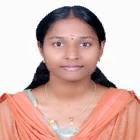
Saritha Murali
Work place: Department of Computer Science and Engineering, 1National Institute of Technology Calicut, India.
E-mail: saritha.mkv@gmail.com
Website:
Research Interests: Image Processing, Image Manipulation, Image Compression, Computer Vision, Computer systems and computational processes
Biography
Saritha Murali completed her Master of Technology in Computer Science (Information Security) from National Institute of Technology, Calicut, India. She is currently working towards the achievement of Ph.D. degree in the area of shadow detection and removal in the same institute. Her research interests are in the area of Computer Vision and Image Processing. She has a few research publications to her credit.
Author Articles
A Survey on Shadow Removal Techniques for Single Image
By Saritha Murali V.K. Govindan Saidalavi Kalady
DOI: https://doi.org/10.5815/ijigsp.2016.12.05, Pub. Date: 8 Dec. 2016
Shadows are physical phenomena that appear on a surface when direct light from a source is unable to reach the surface due to the presence of an object between the source and the surface. The formation of shadows and their various features has evolved as a topic of discussion among researchers. Though the presence of shadows can aid us in understanding the scene model, it might impair the performance of applications such as object detection. Hence, the removal of shadows from videos and images is required for the faultless working of certain image processing tasks. This paper presents a survey of notable shadow removal techniques for single image available in the literature. For the purpose of the survey, the various shadow removal algorithms are classified under five categories, namely, reintegration methods, relighting methods, patch-based methods, color transfer methods, and interactive methods. Comparative study of qualitative and quantitative performances of these works is also included. The pros and cons of various approaches are highlighted. The survey concludes with the following observations- (i) shadow removal should be performed in real time since it is usually considered as a preprocessing task, (ii) the texture and color information of the regions underlying the shadow must be recovered, (iii) there should be no hard transition between shadow and non-shadow regions after removing the shadows.
[...] Read more.Other Articles
Subscribe to receive issue release notifications and newsletters from MECS Press journals